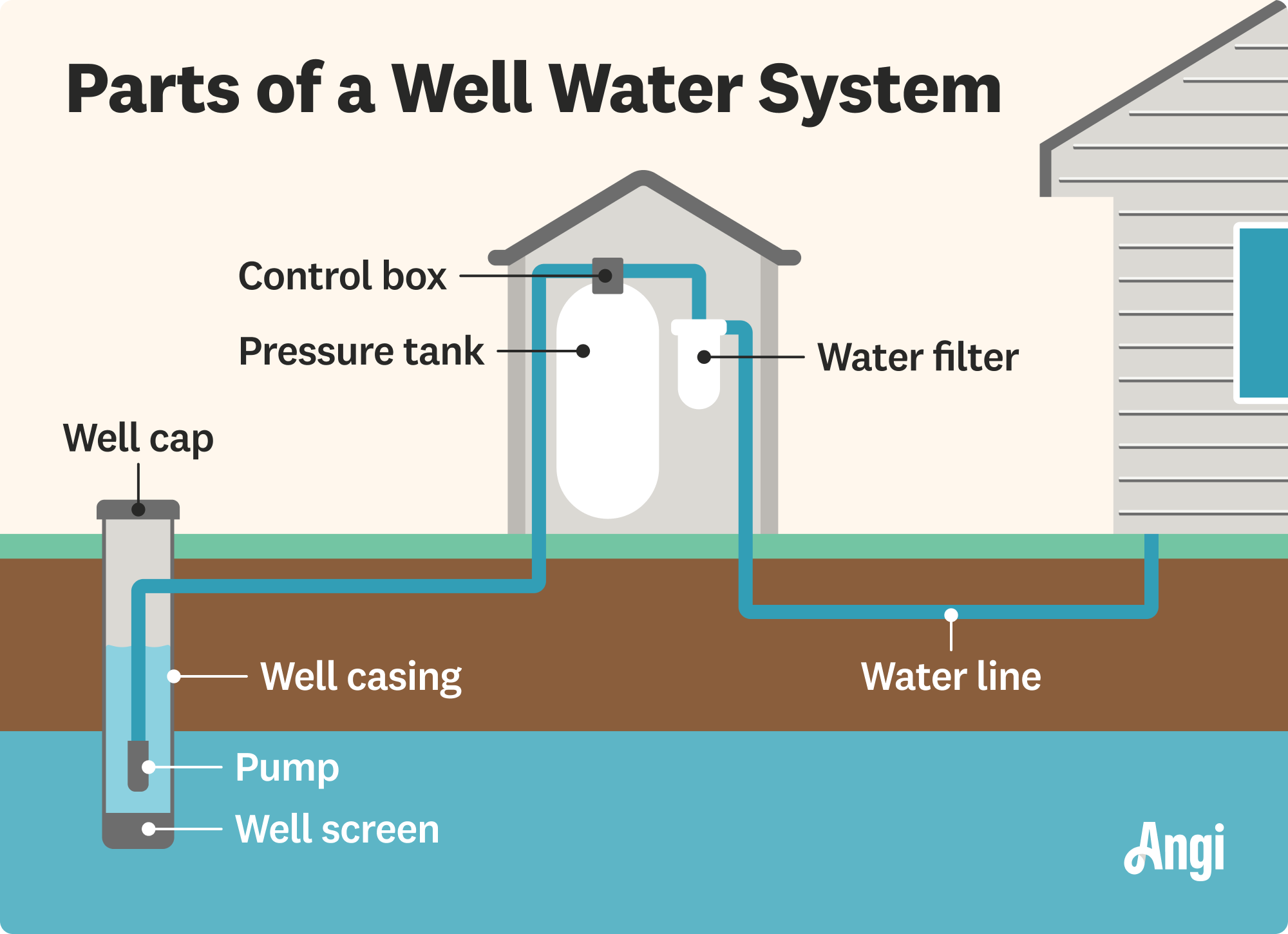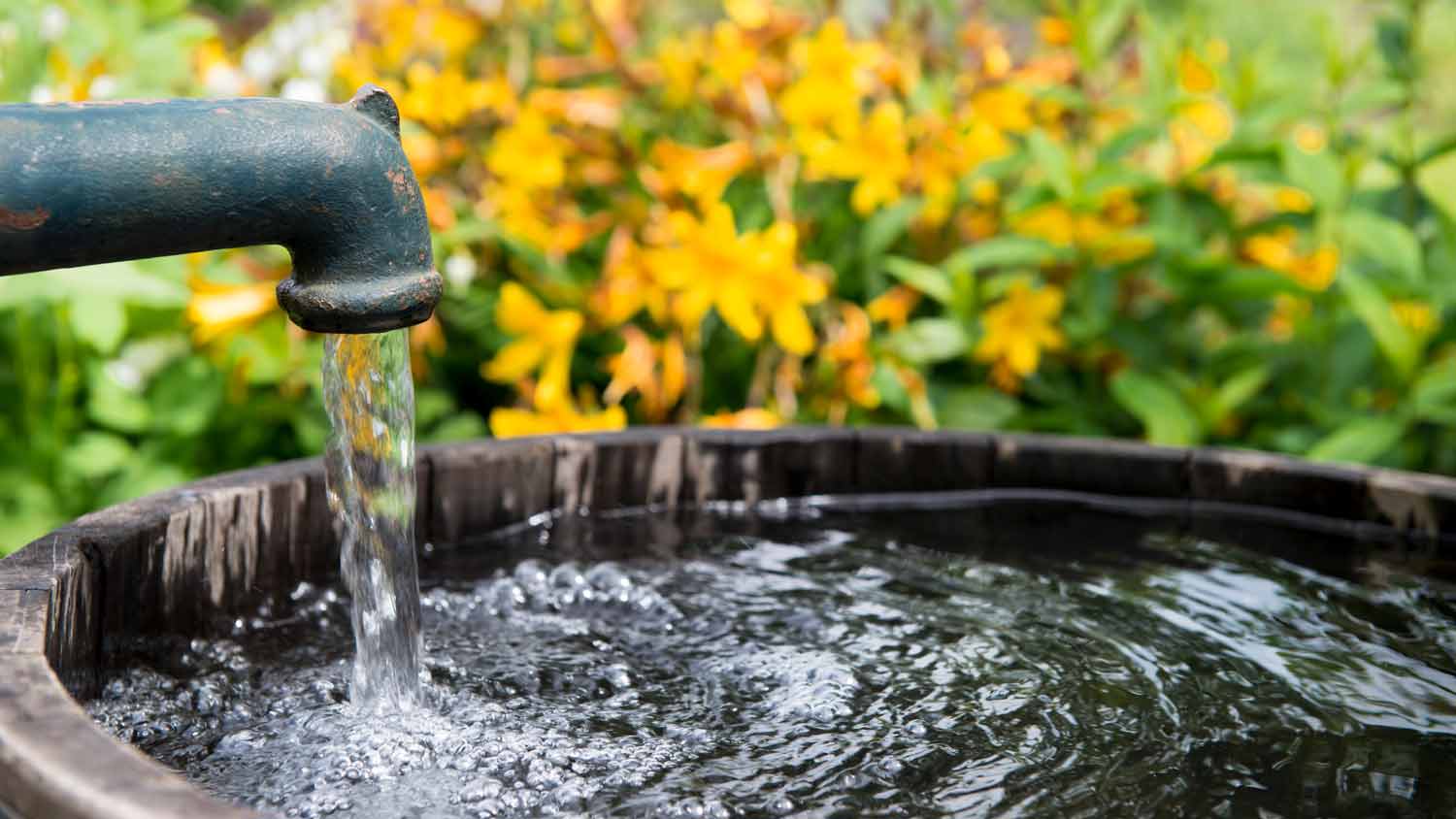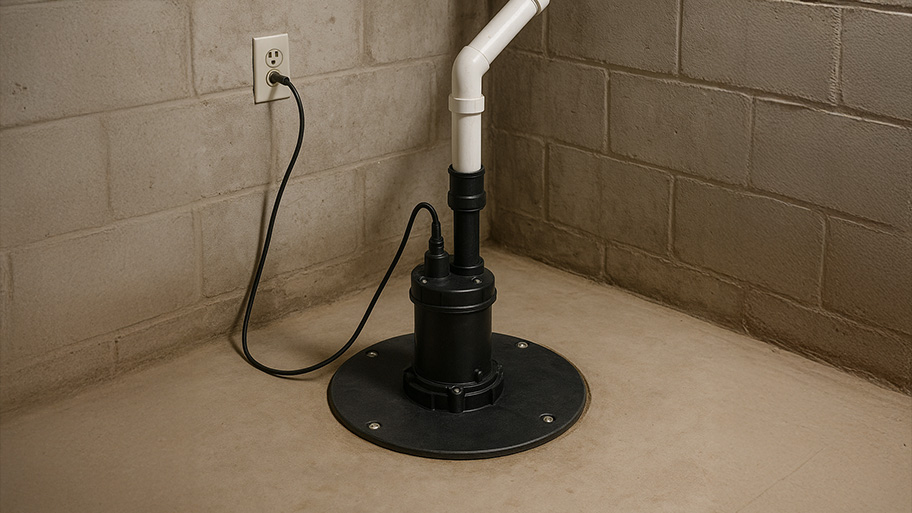
Your solar well pump cost depends on your well depth and flow rate. Explore these cost factors and more to budget for an eco-friendly pump.
Let’s drill into the details


Wells tap into groundwater, and a pump sends the water to your plumbing.
Well water is fresh and naturally filtered and has no cost other than maintenance.
You should test your well water once per year for bacteria and viruses.
Install a whole-house water softener for hard well water.
You can dig a deeper well if you don’t have enough water.
A well taps into naturally filtered groundwater for home use, so you can say this is a deep subject. Unlike water wells of the past, modern wells carry little risk of contamination and are great for rural areas without access to city water. Learn how wells work, their pros, cons, and costs, and how to maintain a well.
Digging a well involves drilling into the bedrock deeper than the water table and pumping the water into your home.
A local well professional digs a hole 100 to 800 feet below the earth’s surface.
Water seeps through bedrock and soil to filter out contaminants.
A pipe or casing maintains the sides of the well and acts as a sealant against contaminants.
Gravity brings the water into the hole and continues replenishing the water supply.
A pump carries the water from the ground to a pressure tank beneath your home.
Pipes distribute the water throughout your home to your faucets, bathtubs, and showers.
There are three main types of private wells based on their construction method. But most wells today are drilled wells because they’re safer and less likely to be contaminated.
Drilled wells are the most common type of well. They are:
Deep wells hundreds to thousands of feet deep
Dug using percussion and rotary-drilling machines
Continuously cased
Safer than driven and dug wells
Here are some fast facts on driven wells. They are:
Shallow wells that are 30 to 50 feet deep
Dug by driving a pipe until it reaches an aquifer
Continuously cased
Dug wells take a lot of manual labor to create. They are:
Shallow wells that are 10 to 30 feet deep
Dug by hand, shovel, or backhoe
Lined with bricks, stone, or tile
Not continuously cased
Each part of a well plays a role in gathering safe drinking water from the ground and routing it to your home. Here are some key parts of a well and their main functions:
Well casing: A tube-shaped structure made of steel or plastic provides structure to the well and keeps out contaminants.
Well screen: Screens made of slotted pipe, continuous slot, or perforated pipe attach to the bottom of the casing to prevent sediment from entering the well water.
Pump: Pumps send water from the well to the pressure tank near or beneath the home. Well pumps are often submersible, but jet pumps can be used in shallow wells.
Well cap: A cap made of plastic or aluminum secures to the top of the well and prevents insects, debris, and small animals from entering the well.
Electrical line: Electricity runs underground to power the pump.
Pressure tank: A well pressure tank holds the well water and ensures steady water pressure to your home.
Water filter: Filters remove impurities and contaminants from the water.
Water line: Pipes connect the pressure tank to the home’s plumbing.

The cost to drill a well ranges from $3,000 to $9,000, or $25 to $65 per foot. The total cost depends on the type of well, the drilling method, and your location. If your water is drying up or you experience low water pressure, you can dig a new well.
You should have your well inspected once every five years. The average cost of a well inspection is $350, which goes toward potential issues and safety concerns that may affect your water supply.

Well water is a great source of water for those in rural areas where it’s challenging or expensive to access city water. When it comes to wells, there are some advantages and disadvantages to consider.
| Pros of Well Water | Cons of Well Water |
|---|---|
| High in healthy nutrients and minerals | High initial installation cost |
| Clean, fresh taste | Requires testing once per year |
| Free of additives | Powered by electricity (no working pump during outages) |
| No water bill | Requires maintenance and repairs |
| Private water source | Can become contaminated |
| Protected from contamination and problems with municipal water supply | More likely to produce hard water |
Follow these maintenance tips to keep your well in good working condition and ensure healthy drinking water.
Test your well water once per year.
Schedule an inspection of your well once every five years.
Use a water softener or filtration system if needed.
Ensure the cover cap is secure and at least 6 inches above ground.
Keep the well cap free of debris.
Avoid using hazardous chemicals near the well.
Replace any lead-based plumbing with copper pipes or PEX pipes.
From average costs to expert advice, get all the answers you need to get your job done.

Your solar well pump cost depends on your well depth and flow rate. Explore these cost factors and more to budget for an eco-friendly pump.

Your well tank replacement cost will vary depending on a few key factors, such as the size and capacity of the well pressure tank.

Drilling a well is no small feat. You’ll need to plan for excavating, a pump, and more. This guide will help you estimate and manage your well drilling costs.

Common well pump problems are power loss, a wrong-sized pump, intermittent cycling, pressure tank failure, and dirty water. Call a pro to troubleshoot quickly.

When your home water pressure isn’t delivering the power you need, give it a quick boost by learning how to adjust the pressure switch on your well pump.

Does a sump pump need a dedicated circuit? Find out the wiring and electrical requirements for installing a sump pump in your home.